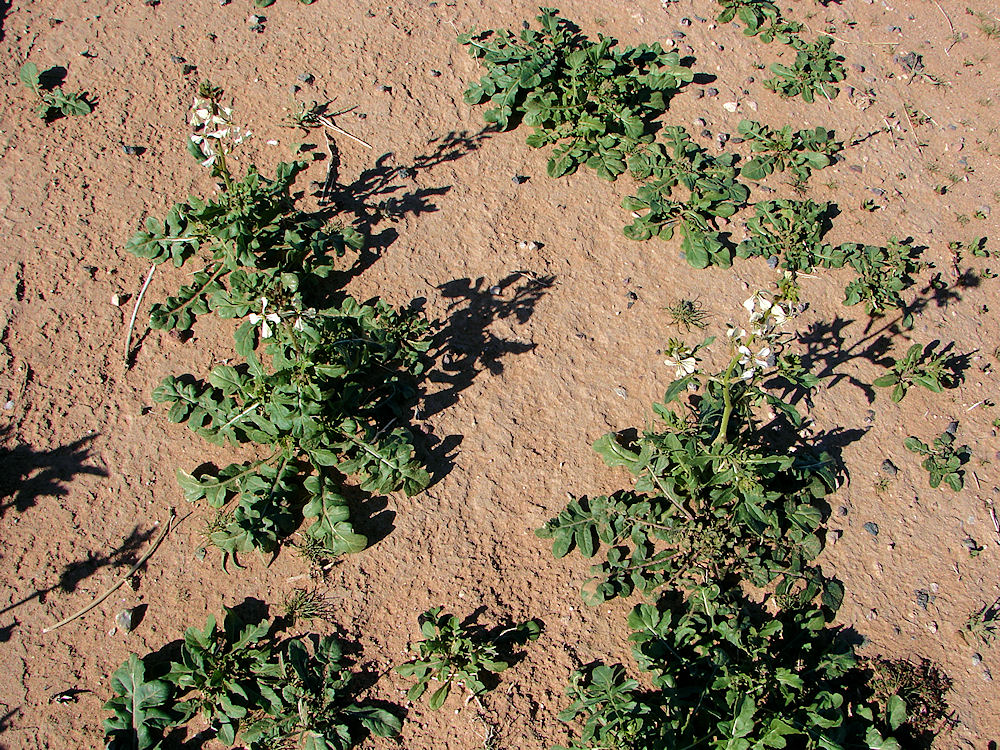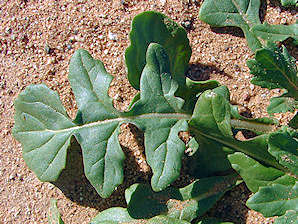Arizona Wild Flowers
Pictures, Photos, Images
Descriptions, Information, Reviews.
Rocket Garden Mustard, Eruca vesicaria subsp. sativa.
We Are Proud Of Our SafeSurf Rating!
Click On Any Of The Following Links By Amazon.Com
For Books, & Videos About Wildflowers Of Arizona & The Southwest USA. No Obligation!
 |
| Rocket Garden Mustard, Eruca vesicaria subsp. sativa. Flowers Photos Taken February 24, 2011. Hyder Valley near Gila Bend. 555 feet elevation, Arizona. |
|---|
 |
| Rocket Garden Mustard, Eruca vesicaria subsp. sativa. Flowering Plants Photos Taken February 24, 2011. Hyder Valley near Gila Bend. 555 feet elevation, Arizona. |
 | |
| Leaf Structure. Rocket Garden Mustard Eruca vesicaria subsp. sativa | Plant Structure. Rocket Garden Mustard Eruca vesicaria subsp. sativa |
|---|
Rocket Garden Mustard.
We wish to thank Wikipedia, the free encyclopedia for some of the information on this page. We share images and information with Wikipedia. Rocket Garden Mustard or Eruca sativa (syn. E. vesicaria subsp. sativa (Miller) Thell., Brassica eruca L.), is an edible annual plant, commonly known as rocket (roquette) or arugula, not to be confused with Wild rocket. It is a species of Eruca native to the Mediterranean region, from Morocco and Portugal east to Lebanon and Turkey. It is considered an invasive weed that has entered the United States & Arizona. Rocket Garden Mustard or Eruca sativa (syn. E. vesicaria subsp. sativa) is spreading over the Desert Southwest at low and some mid elevations from southeastern California to southern Nevada and South into the states of Baja California and Sonora. It favors sandy, disturbed soils at low elevations, but its range is expanding rapidly into some undisturbed soils in Arizona. Rocket Garden Mustard has become the dominant annual plant in much of the area along Interstate 8 from Gila Bend west to the Maricopa County line, a distance of about 45 miles. It grows on both sides of the freeway. It has been there for many years and it is slowly spreading. Because of its stealthy spread and its remote location, its invasion has gone unnoticed except by botanists. Rocket Garden Mustard is used as a leaf vegetable. It is rich in vitamin C and potassium. It is frequently cultivated, and it has been grown in the Mediterranean area since Roman times. It is also considered an aphrodisiac. Before the 1990's it was usually collected in the wild and was not cultivated on a large scale or researched scientifically. In addition to the leaves, the flowers are often used in salads as an edible garnish, its young seed pods and mature seeds are alsol considered edible. It is now cultivated in various places, especially in Veneto, Italy, but is available throughout the world. It is also locally naturalised away from its native range in temperate regions around the world, including northern Europe and North America, and the USA. ] In India, the mature seeds are known as Gargeer. It has a rich, peppery taste, and has an exceptionally strong flavour for a leafy green. It is generally used in salads, often mixed with other greens in a mesclun, but is also cooked as a vegetable or used raw with pasta or meats in northern Italy and in coastal Slovenia[citation needed] (especially Koper/Capodistria), where it is added to the cheese burek. In Italy, rocket is often used in pizzas, added just before the baking period ends or immediately afterwards, so that it will not wilt in the heat. On the island of Ischia in the Gulf of Naples, a digestive alcohol called rucolino is made from the plant, a drink often enjoyed in small quantities following a meal. The liquor is a local specialty enjoyed in the same way as a limoncello or grappa and has a sweet peppery taste that washes down easily. When we were in Egypt, we learned the plant is commonly eaten with ful medames (the traditional Egyptian breakfast of dried fava beans) for breakfast, and that it regularly accompanies local seafood dishes.
Quick Notes:
Height: When mature from 8�39 inches in height. In Arizona some reaches 5 feet in height.
Flowers: The flowers are 2�4 cm (0.8�1.6 in) in diameter, arranged in a corymb, with the typical Brassicaceae flower structure; the petals are creamy white with purple veins, and the stamens yellow; the sepals are shed soon after the flower opens.
Flowering Time: Late January - May.
Stalk: The flower stalk is about 18" - 39" long, smooth, and dark green.
Seed Pods: The fruit is a pod about 12�35 millimetres (0.5�1.4 in) long with an apical beak, and containing several seeds (which are edible).
Leaves: The leaves are deeply pinnately lobed with four to ten small lateral lobes and a large terminal lobe.
Found: Native to the Mediterranean region, from Morocco and Portugal east to Lebanon and Turkey. Found throughout the lower elevations in Arizona. Native to the USA (AZ, CA, CT, IA, IL, KS, MA, MD, MI, MO, MT, NC, ND, NE, NJ, NM, NV, NY, OR, PA, TX, UT, VT, WA, WV, WY). Also found in Canada (AB, BC, MB, ON, QC, SK). Also found in Mexico in northern Sonora, & northern Chihuahua, Baja Norte, & Baja California.
Hardiness:
Soil pH requirements:
Sun Exposure:
Elevation: 0 - 2,600 Feet. Usually below 1,300 feet.
Habitat: Irrigated fields, moist fallow fields, roadsides. It typically grows on dry, disturbed ground.
Miscellaneous: Flowering Photos Taken February 24, 2011. Hyder Valley near Gila Bend, Arizona. At 555 feet elevation.
|
We Are Proud Of Our SafeSurf Rating!
Click On Any Of The Following Links By Amazon.Com
For Books, & Videos About Wildflowers Of Arizona & The Southwest USA. No Obligation!
| © 1966 - Present, Audrey, Eve, & George DeLange |